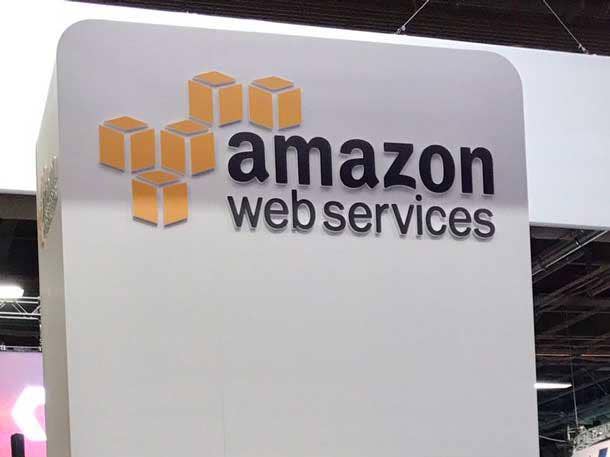AWS Outposts Is GA. Now What?
Launch partners are fielding real interest from customers for the on-premises server rack. But they still are waiting for Amazon Web Services to tell them when they can start closing deals.

AWS Outposts, the public cloud leader's once-unthinkable leap into corporate data centers, is here. Sort of.
The Amazon Web Services-outfitted, on-premises server rack officially went GA during the AWS re:Invent conference a couple of weeks back. Now launch partners are busy training staff, starting conversations with customers—and waiting for AWS to tell them when the offering will actually ship.
The availability and capabilities of Outposts is "probably the No. 1 question coming out of re:Invent from our customers," Jeff Aden, executive vice president of marketing and strategic business development at Seattle-based cloud consultancy 2nd Watch, told CRN. "[AWS CEO] Andy [Jassy] said it's available, and we have lots of clients asking about this."
[Related: Supported AWS Outposts Services Hyped Ahead Of Launch]
Despite being a launch partner and one of the standouts in Amazon's channel, 2nd Watch still doesn't know when those engagements can begin in earnest, regardless of the GA status.
Large enterprises—especially those operating manufacturing plants or with remote regional facilities—are eager to hear how Outposts can fill the gap in their IT environments for workflows with proximity or latency requirements, Aden said.
2nd Watch technicians went through training before the annual AWS conference in early December, and now the consultancy's sales agents are going through the enablement process as they prepare to move early sales discussions to the purchasing phase.
But selling Outposts will not be as simple as an online transaction—at least not initially.
"It's going to be an interesting product," Aden said. "Amazon is going to ship, deliver, rack, stack, set up."
Outposts will first offer AWS EC2 instances and EBS block storage, as well as the ECS and EKS hosted container services. S3 storage will be added in the first half of 2020, Jassy said at re:Invent.
The "AWS native" variant for customers that want to use Amazon APIs and control plane will ship first. For customers that want to use a VMware control plane, possibly in conjunction with VMware Cloud on AWS, that option will be available come early 2020, Jassy said.
Kelly Hartman, global head of AWS Partner Network, told CRN during re:Invent that AWS is finalizing the details of when the product will ship and how ongoing infrastructure management duties will be divided with consulting partners.
There's no special partner accreditation for Outposts, Hartman said, as AWS designed the system to be operationally identical to its traditional cloud offerings.
"There isn't anything different," she said. "We extend all the services."
For that reason, Hartman told CRN she sees the biggest play for partners, at least in the early days of Outposts, as migrations.
"Our starting point is our migration partners, so I would tell any partner who's interested to start there," Hartman said. "Look into the migration competency and match those capabilities, then surround that with whatever the use case is, whether it's data sovereignty or whatever [customers] need the on-prem solution for."
That's especially true in geographies with strict data requirements—partners serving those regions should prioritize looking into Outposts, she added.
As to lingering questions in the AWS channel about how ongoing management will be split between partners and AWS, "the management piece will probably evolve over time," Hartman said.
Technology partners will also soon learn how they can begin testing their software on Outposts hardware to deliver "a whole suite of applications customers are used to running" on the on-premises infrastructure, she added.
Onica, an exclusive AWS partner recently acquired by Rackspace, is currently putting its people through Amazon's enablement program as an Outposts launch partner. As staff attend training sessions, executives wait to hear more about the go-to-market timeline, Onica CTO Tolga Tarhan told CRN.
"It's not something we've seen deployed in the wild yet," Tarhan said, adding, "this is typically how things launch at AWS."
Amazon has suggested partners may one day have the option of installing the Outposts rack, but at first the channel's role will be migrating data and workloads and providing managed services around them, he said.
Part of the appeal of Outposts is it decouples the two main challenges of cloud adoption faced by many enterprises: transforming their operating models and outsourcing their infrastructure.
Outposts allows IT teams to start working with a DevOps, software-defined model of building and managing infrastructure—essentially operating as in the cloud. Outsourcing can come later, possibly when motivated by financial exigencies, like a data center refresh, Tarhan said.
"That's the value [proposition] for a partner," he told CRN. "We can help customers do that transformative piece, and we are sure the cloud workloads will follow. Once people get comfortable with how cloud works, they are going to the public cloud when the rest of their data center ages out."
Whether Outposts make sense for customers because of compliance and security constraints, financial models, remote connectivity challenges, or just to host workloads not ready to move off-site, Tarhan said the common theme is "you can have the programming model of cloud without having the outsourcing of cloud. And I think that will be attractive to people."
Having recently merged its business with one of the world's largest private cloud providers, Onica hopes to even deploy some Outposts racks in Rackspace data centers. Doing so will allow Rackspace to offer customers a unique cloud solution—an AWS environment that's privately hosted.
One day, "customers could choose to order Outposts and gear it up in a Rackspace data center," Tarhan said.